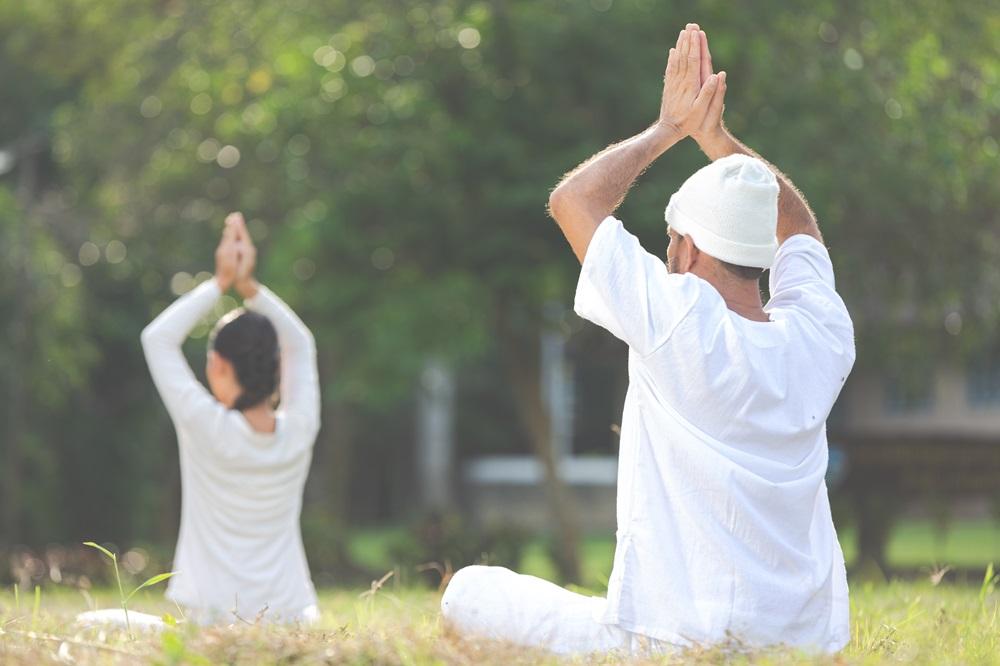REJUVENATION IS THE HOT health concept in China at the moment. In recent years, Chinese women’s definition of beauty has been constantly changing. A few years ago, Chinese girls pursued fair skin and slim bodies. This forms an obvious contrast with the current “beauty without definition” idea which has become the core of Chinese girls’ aesthetics – and “health” has also become a must-have element of beauty.

Among the various fitness methods, qigong(氣功), a kind of traditional Chinese exercise, has become the first choice of Chinese girls. The reason is that compared to the high-intensity interval training (HIIT) practised in the West, qigong movements are much more gentle and better able to regulate the body’s internal state. And baduanjin (八段錦), literally translated as “Eight Pieces of Brocade”, is one of the most popular forms of qigong. Interestingly, the Chinese craze for health maintenance is already influencing people overseas.
Pamela Reif, a German fitness vlogger and one of the most popular KOLs on the Chinese social platform Bilibili, has become first choice viewing of young Chinese girls who want to keep fit by exercising, thanks to her follow-up videos of efficient HIIT exercises and yoga. On Chinese social media platforms, young Chinese girls have been complimenting Pamela: “To lose weight, look for Pamela”. To follow the trend of Chinese fans, Pamela posted her video of doing baduanjin in her playlists.

Baduanjin, originally a popular qigong practice among the middle-aged and elderly in Hong Kong and Guangdong Province, is a fitness method invented in ancient China that consists of eight body movements, including body movement and breathing regulation.
Legend has it that the Baduanjin was created by Yue Fei(岳飛), a Northern Song general, and there is also a legend that the baduanjin was created by Zhong Liquan(鐘離權) of the Tang Dynasty(唐代), but these claims are not very credible.
The baduanjin first appeared in the Song Dynasty in Taoist health books such as the “Pivot of the Way” (“Dao Shu”, c. 1150), compiled by Zeng Zao(曾慥), which recorded various fitness methods.
Therefore, most people believe that the baduanjin was created in the Song Dynasty. The standing baduanjin in circulation today is generally derived from the “baduanjin” appendix to the “Illustrations of Sinew Changing Classic”(《易筋經圖說》) compiled by Liang Shichang(梁世昌) in the Qing Dynasty(清代). The author, however, is unknown.

Baduanjin generally consists of eight movements, each of which is called a “Duan”. Each movement is repeated several times and is accompanied by breath conditioning.
The movements of Baduanjin are generally calming and suitable for people of all ages. In terms of posture, there are two types: standing and sitting; standing requires the feet to be slightly apart at shoulder width; sitting requires the knees to be crossed and the specific movements to be performed are different. Both standing and sitting postures are summarised in 8 sentences.
| Standing baduanjin | |
| 1 | Two Hands Hold up the Heavens |
| 2 | Drawing the Bow to Shoot the Eagle |
| 3 | Separate Heaven and Earth |
| 4 | Wise Owl Gazes Backwards or Look Back |
| 5 | Sway the Head and Shake the Tail |
| 6 | Two Hands Hold the Feet to Strengthen the Kidneys and Waist |
| 7 | Clench the Fists and Glare Fiercely |
| 8 | Bouncing on the Toes |
If you are tired of intense cargo training, why not try Baduanjin, which is designed to nourish the body from the inside out?
